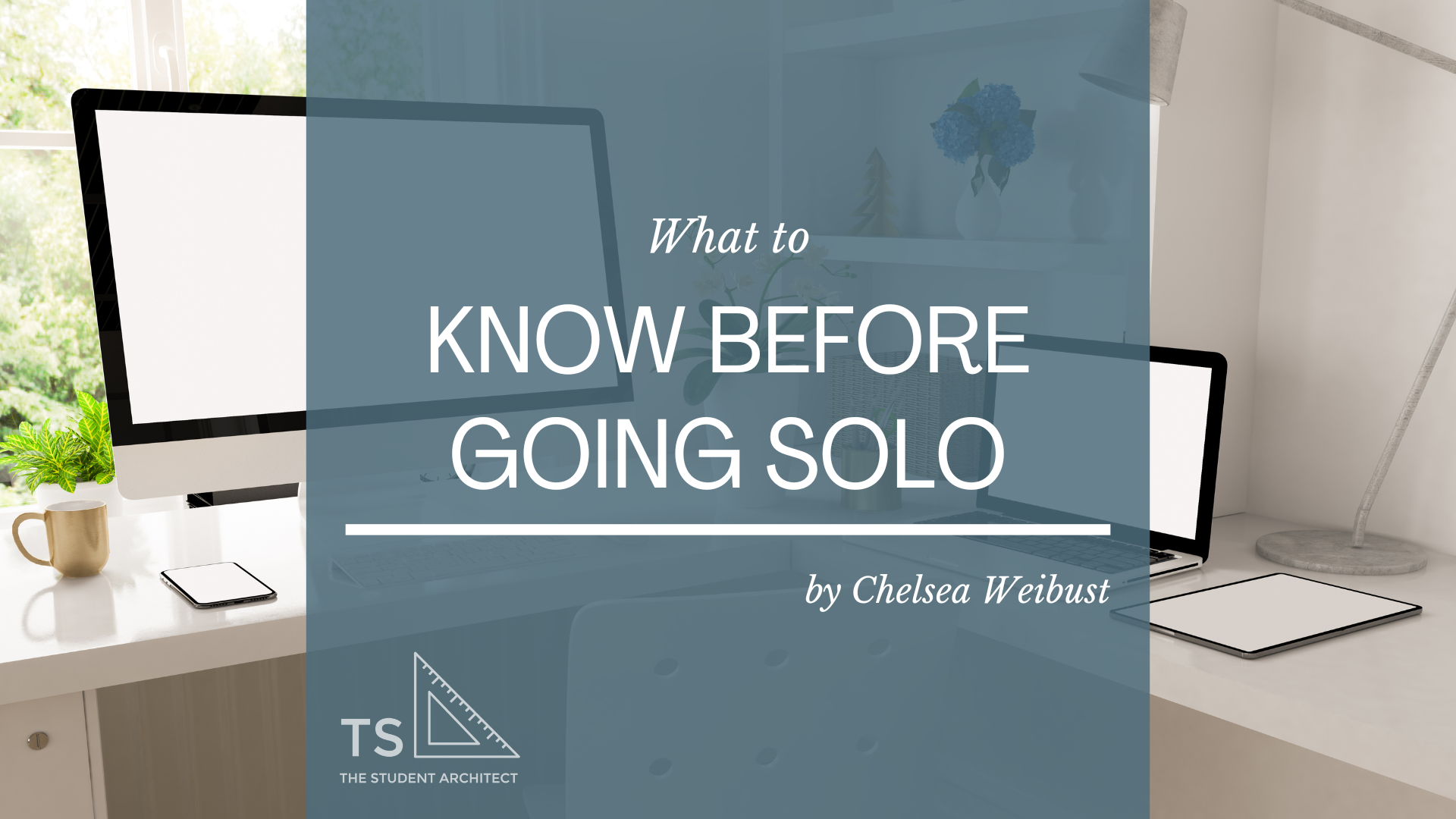I received a great question the other day: “How can I avoid all-nighters?”
You may have seen my previous post on “How to Survive the All-nighter” but it’s best if we can avoid them in the first place, right?
All-nighters are very unhealthy for you, especially if you find yourself doing them all the time. Working for hours on end, especially overnight, can cause you to make mistakes in your work, can make you sick, and can be seriously dangerous if you’re working on models with knives and machinery without sleep.
When I received this question, I really thought back to when I was in college and how my work habits have changed since working in architecture and running my own design business. Let me tell you, a lot has changed!
So, if you’re looking for healthier habits, here are my tips for avoiding all-nighters.
Disclaimer: Some of the links below are affiliate links. Please understand that I have experience with all of the products I recommend, and I recommend them because they are helpful and useful, not because of the small commissions I make if you decide to buy something. Please do not spend any money on these products unless you feel you need them or that they will help you achieve your goals.
Photo by Jazmin Quaynor
1. Scheduling + time management
Until recently, I avoided schedules like the plague. I thought they would make my life boring and I’d feel like I was living the same day on repeat. In actuality though, I wasted a lot of time wondering what I should be doing next, what my deadlines were, how much time all of my tasks/assignments would take, etc.
I highly recommend scheduling out your entire day, every day, for at least a week at a time. Schedule everything from breakfast, to meetings, to classes, to lunches, to workouts, to tasks, to breaks… literally everything so that you can give yourself the permission to take breaks, remind yourself to eat meals, stay committed to waking up at a certain time to stay on schedule, remind yourself of important upcoming deadlines, and figure out how much time you realistically have for each task.
Putting time parameters around your tasks helps you stay accountable, forces you to be mindful about how much time you’re spending on each task, and teaches you a valuable skill called time management. I had terrible time management in college and I’m only just learning now how to better manage my time. The sooner you learn this skill, the better.
Tools: Google Calendar, Asana, Notion
Photo by Sage Friedman
2. Go to bed early, wake up early
Besides scheduling, the biggest change I’ve made in my life has been getting up early. In college, I was lucky I if was able to get myself out of bed by noon on a weekend. My brain and body were just so exhausted from the grueling week before, I would just crash every weekend.
If you’re like me, maybe your creative brain is insistent on being most productive at night. Usually around 10pm I’ll get a flow of creative energy and an endless slew ideas. When I go through those phases, I usually let it play out, but I always make sure that that’s the exception, not the norm, because these “up late” cycles can be really hard to break.
If you can get yourself on the early cycle though, you’ll be better off in so many ways. If you can train yourself to be productive in the morning, you’ll be surprised how much you can accomplish and the days will feel so much longer (hopefully in a good way!). The easiest way to break the cycle is to force yourself to wake up really early (like 5 or 6am) so that you’re tired enough when 9 or 10pm comes around.
I’d say a reasonable wake time to shoot for on a daily basis is around 7am.
Just think, if you were to get up at 10am (rather than 7am) that would be 3 hours later you’d need to go to bed to get the same amount of time out of your day. So instead of being able to go to bed at 9 or 10pm, you’d be going to bed at 12 or 1am.
Tools: Sleep Cycle, iPhone Health app
Photo by Luis Quintero
3. Exercise and take breaks
How many times do you tell yourself “I just need to finish this one thing,” “just a couple more minutes,” “I’m just gonna look it over one more time...”?
When I get in a working groove, it’s really tough to get myself out of it. Since making my schedules though, I make sure to add in all of my breaks reminding myself to get up every once in a while to rest my eyes, think about something else, go for a walk, eat something, etc.
One of the best decisions I made was to do yoga first thing in the morning, every morning―it’s a beautiful way to start the day. I love having a mindful practice that helps set the tone for my entire day and feel accomplished right from the start. Maybe you like to go to the gym, run, bike, or something else. Whatever you like to do to exercise, I recommend doing it first thing in the morning so you’ll be energized going into your day. If you exercise at night it can be hard to sleep, but if that’s your only option, I’d still recommend it as it helps clear your mind and strengthen your body.
It’s a great idea to get a workout partner to get up early and exercise with so you can hold each other accountable and make it more fun. If you can’t find anyone though, don’t let that stop you!
I also occasionally use an app that has short exercises so I can do quick workouts throughout the day. This is helpful if you’re short on time or intimidated by longer workouts but still want to exercise.
Shoutout to my girl, Adriene: Yoga with Adriene
Tool: FitOn app
Photo by airfocus
4. Prioritize smaller tasks
Sometimes this isn’t a plausible option when your biggest assignment is due well before your smaller tasks, but in general, try to prioritize your smaller tasks over the larger ones. One of the biggest mistakes I constantly made in school was feeling like I needed to finish the biggest projects first. What ended up happening was, I’d spend the majority of my time on one big project, and would leave myself with almost no time to work on all my other smaller projects.
When you work on smaller tasks first, you can begin to feel more accomplished by being able to cross items off the list, helping build momentum for larger tasks. Also, every task you finish is one less task hanging over your head later.
For larger projects, instead of writing “do project,” break it down into granular tasks so you can feel like you’re making progress, learn to manage your time, and make an overwhelming task seem less daunting.
5. Get clear about your assignments
If you’re not sure about what’s expected of you or what you should be working on, ask! If you’re at work, ask your boss; if you’re at school, as your professors. Nothing is worse than spending valuable time wondering what you should be doing, trying to piece together information, or worse yet, working on the wrong thing.
Sometimes projects are ambiguous or maybe your boss or professor is making assumptions about what you know. The best thing to do is shoot them an email or ask them directly if you can. Another option could be to ask your coworkers or your classmates. You may feel embarrassed or uncomfortable about asking what you should be working on but image how you’d feel once you find out you’ve been working on the wrong thing.
Continue reading below
6. Set realistic expectations
If you work in architecture, it’s important to set realistic expectations with your clients and even your bosses. If what’s being asked of you is not physically possible in the given amount of time, maybe another team member needs to be brought onto the project or the deadline will need to be pushed back. All-nighters should never be expected of you, and you should not have to feel obligated to do them.
If you’re in school, it can be exciting to do things differently, design what has never been designed before, go above and beyond, etc. but just make sure you’re not getting in over your head. Be realistic with your available time and abilities. Start simple and work your way up to the more complex and outrageous if you have the time. I definitely don’t want to stifle your creativity but, in general, it’s better to have a simple idea that’s well executed than an overly complex one that’s half-baked.
Photo by Kaleidico
7. Use templates
So much of my time in school was wasted figuring out how to design my presentation boards and sometimes this happened at the expense of the design of my actual project. Try to start with a decent template that you’re comfortable with, that has enough of a design aesthetic, you can just drag and drop of your project drawings into the template. Then, if you have time at the end, you can play around with your sheet design. Your presentation is absolutely important, however, the most important aspect is your project and should be your priority. If you can, try to devote (and limit yourself to) one day to designing and organizing your presentation boards.
Templates can carry over to other areas of your work too, such as Revit project templates, essay templates, rendering templates, etc. It’s the content that you add too these templates that makes your work unique and can help save you hours of time. Once you have the outline in place, then you can make it your own.
You can download pre-made templates or you can make your own. If you need some design ideas, I’ve found Canva to be a great free tool for when you need to create appealing designs quickly or just need some design inspiration. It also helps to draft out your presentation boards on paper first so you can better organize your thoughts and develop a compelling presentation that takes your reviewers on a comprehendible journey through your project.
Guide: Cover Letter Template
Tools: Canva, Adobe Suite (Indesign, Illustrator, Photoshop) - teacher and student discount here
Photo by Clem Onojeghuo
8. Get a part-time job
I was pretty devastated when I found out I wasn’t able to go to architecture school and play sports. That was probably one of the best outlets for me when I was in middle school and high school and definitely helped me manage my time better because, having had other time commitments, any extra time was precious. Unfortunately, architecture classes and field trips did not coincide with swim or tennis schedules. There were actually a couple of people in the architecture program who did play sports, but it was extremely challenging for them and I knew I didn’t have the mental capacity to take on another time consuming commitment.
What I did instead though, was get a couple of part-time jobs on campus. It was only about 10 hours a week but was great to have some extra money and helped somewhat with managing my time. One of my jobs was lifeguarding at the pool and some days I needed to get up at 5:20am to open the pool by 5:45. It was really difficult to get up but once my shift ended, I felt so accomplished, especially since most of my friends we’re just waking up. Having part-time jobs on campus gave me a great opportunity to meet people outside the architecture program too and gave me an entirely different perception of the college experience. There is great value to expanding your friend group outside of your area of study.
If you can’t find/or don’t want a job, you could join a sports team, join a club, or do some other kind of organized, extracurricular activity. The idea here is to expand your friend circle to people outside of architecture and place more parameters around your time so you’re forced into good time management.
Photo by Chang Duong
9. Choose your friends wisely
If your friends have bad habits, you will develop them too.
In my first year of architecture school, I found myself pulling all-nighters constantly because I was way in over my head. As a matter of circumstance, I surrounded myself with the “all-nighter crew.” We all slept in late, and stayed up late, and that was our routine. Why would I wake up early if all my friends were still asleep? Why would I go to bed when all my friends are still up? Clearly I had FOMO, but I can’t help but wonder, if I had made more of an effort to surrounded myself with people who had better habits, maybe I would have learned from them and developed better habits myself.
Try to surround yourself with people who you aspire to be, and with effort, someday you will get there too.
Photo by Aron Visuals
10. Appreciate the value of time and energy
The sooner you appreciate the value of your time and your energy, the better. There’s only so much of you to go around, so make sure you’re using your time and energy wisely. Try to be mindful of how you’re spending your time and see where you can make improvements so you can be more efficient. This is essentially the key to mastering time management.
Practicing mindfulness and intentionality has really helped me manage my time better, prioritize tasks, and live a healthier life. Whether it’s meditating or slowing down to be present in the moment, these tools can be very valuable in helping you focus your efforts.
Tools: The Minimalists podcast, 10% Happier podcast, Jay Shetty, Headspace app
In summary, the key to avoiding all-nighters is being mindful of your time, setting realistic expectations, surrounding yourself with people who have healthy habits, and using tools and methods that will help you work faster and smarter.
♥ Chelsea

























If project inquiries have dropped off, timelines are getting pushed, or clients are suddenly tightening their budgets—you’re not alone. Economic instability has a ripple effect across the architecture world (and every other industry). But while things might be slower on the surface, this season can still be an opportunity to recalibrate, rethink, and rebuild stronger.